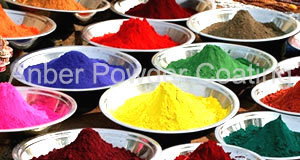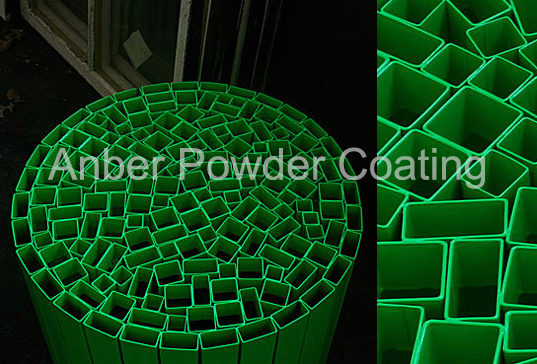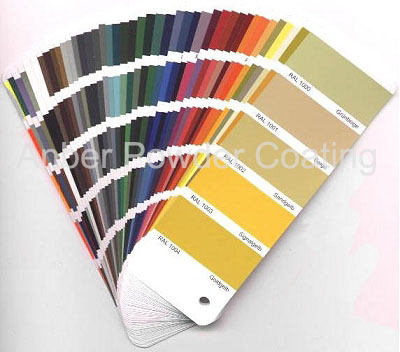|
 |
Sitemap |
 |
FAQ |
Welcome to Anber Powder Coating Co., Ltd's website! |
|
| |
 Powder coating lines Powder coating lines
 Components of powder coating line Components of powder coating line |
|
Different type of plastic powder - Material of powder coating line
 |
|
 |
Plastic powder - material of powder coating line |
Standard color card |
Tubes covered with powder coatings |
Two basic types of powder coating plastic finishes are available: thermoplastic and thermoset. Typically, purchasers and manufacturers examine overall costs and potential coating complexity when deciding which type is most appropriate for their application. In each of the two classifications, there are a variety of sub-groups, and each individual powder is engineered for specific finish qualities.
Thermoplastics
Thermoplastics are synthetic materials that can be formed multiple times. High temperatures can melt thermoplastics, which is beneficial for reforming and recycling them but not ideal for situations where a part might be exposed to intense heat. However, several thermoplastics used as powder coats are favored for their wear- and chemical-resistance.
Nylon
Nylonpowder coatis extremely durable and impact resistant. It offers excellent protection against chemicals and solvents and is FDA approved for food contact. Parts covered with nylon include food handling and dishwasher baskets. Nylon also has a very low friction coefficient, making it useful as a coating on gears and conveyor equipment.
Polyvinyl Chloride (PVC)
PVC coatings are pliable, sleek and durable. Like nylon coatings, they are also FDA approved for food contact, and can be used for a number of similar applications. They also are great electrical insulators for electrical lines, and work well as coatings for chain link fencing. Environmental groups, like Greenpeace, have advocated phasing out PVC because of harmful byproducts, but tests on the subject remain inconclusive.
Polyolefin
Polyolefin finishes are significantly resistant to abrasives and chemical, and offer a smooth surface and excellent adhesion properties. Due to these benefits, polyolefin coatings are used on lab equipment components that require regular cleanings.
Polyester
Polyester coatings weather well, look great and are resistant to abrasions. They find use in outdoor furniture, exposed automobile parts such as leaf and strut springs and are available in a diverse pallet of colors. Some polyester powders are architecturally certified for building exteriors as they shield the elements and maintain their color with only minor fading over the years.

|
| |
|



